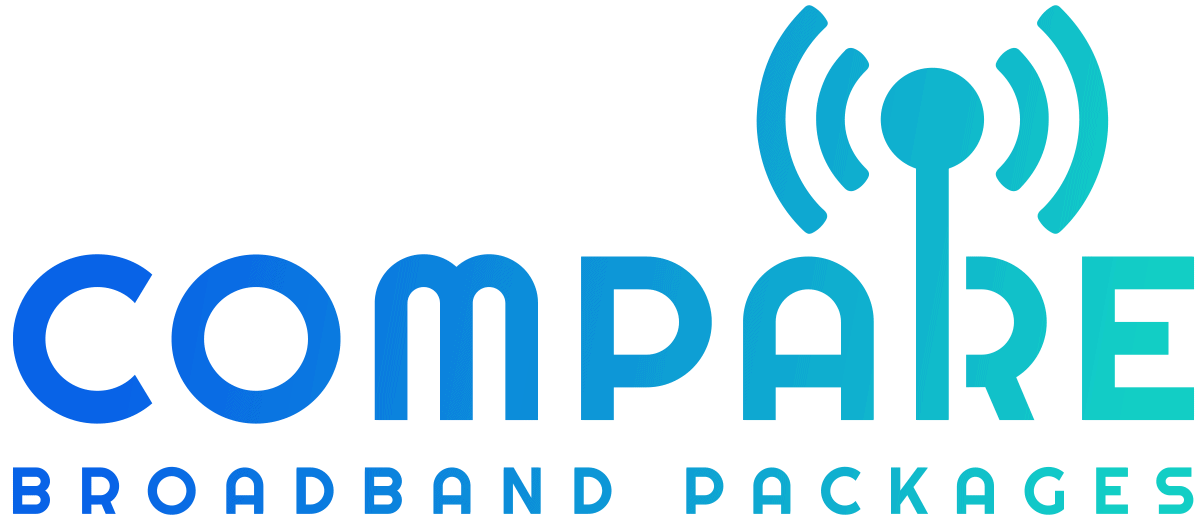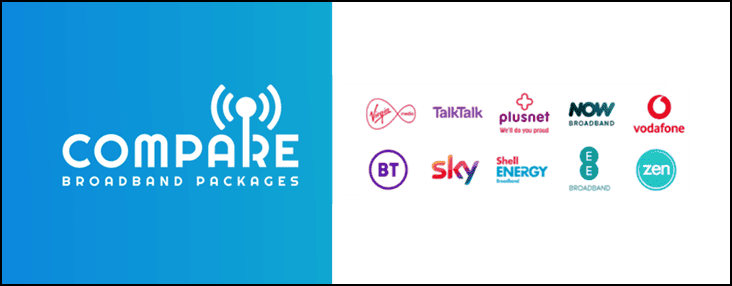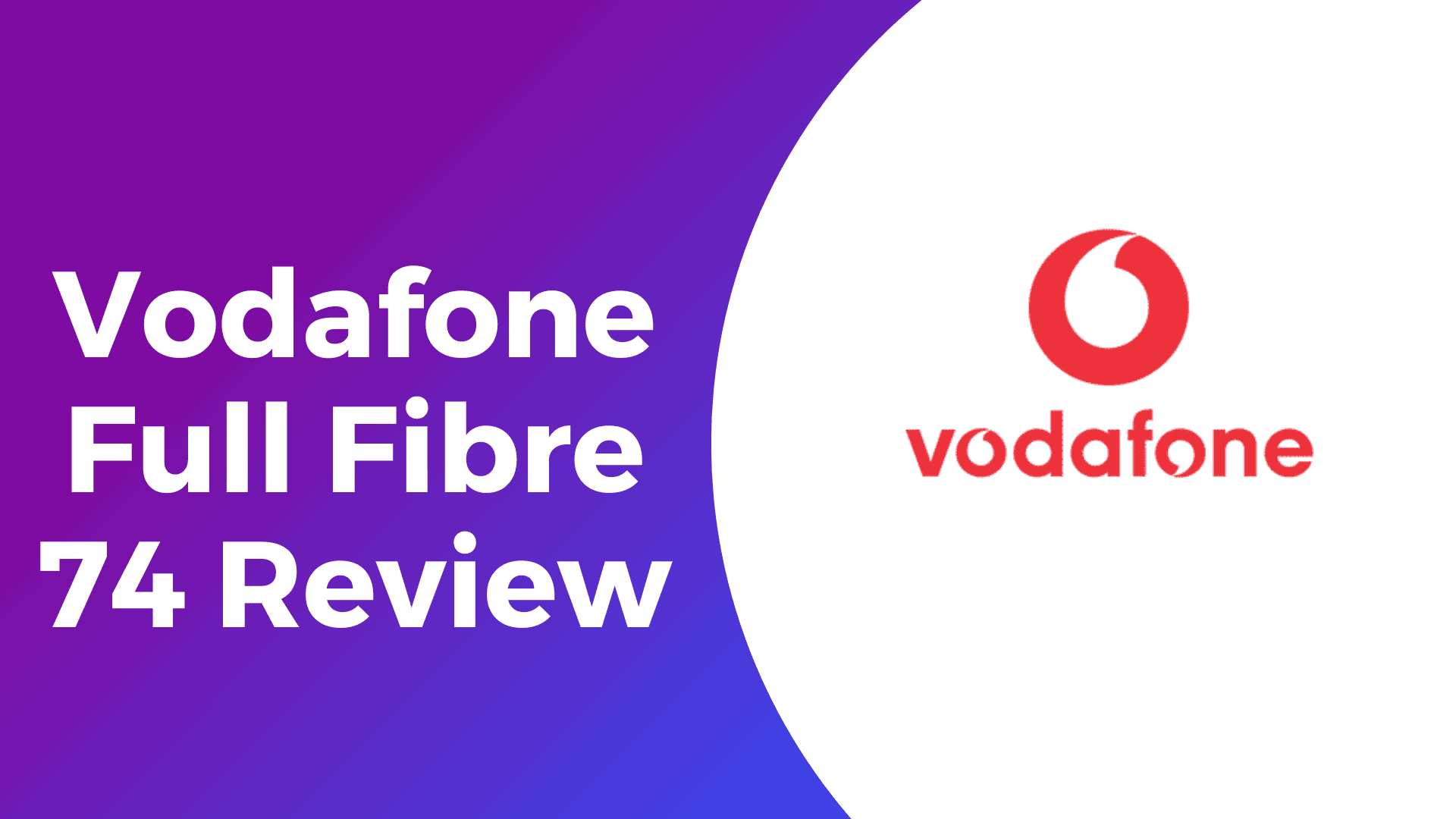
The Ultimate Broadband Installation and Setup Hacks Revealed
The process of broadband installation and setup can often feel like a daunting task. Yet, with the average home now relying heavily on internet connectivity, getting this right is critical.
This article will guide you through each step of the process, providing insights to help avoid common pitfalls. Let’s dive in and demystify the world of broadband connection together!
Key Takeaways
- Self-installation of broadband connection is a convenient and cost-free option that can be done by following simple steps provided by your broadband provider.
- The advantages of self – installation include saving costs, quick connectivity, and ease of setup, while the disadvantages include potential issues with speed or intermittent connectivity and the risk of property damage.
- Factors to consider during broadband installation include obtaining permission from your landlord, the possibility of property damage during installation, and the need for pre-wiring in your home.
- Virgin Media, Vodafone, and Now Broadband are leading providers offering self – installation options with various benefits such as fast speeds, affordability, parental controls, and WiFi management tools.
Self-Installation Process for Broadband Connection
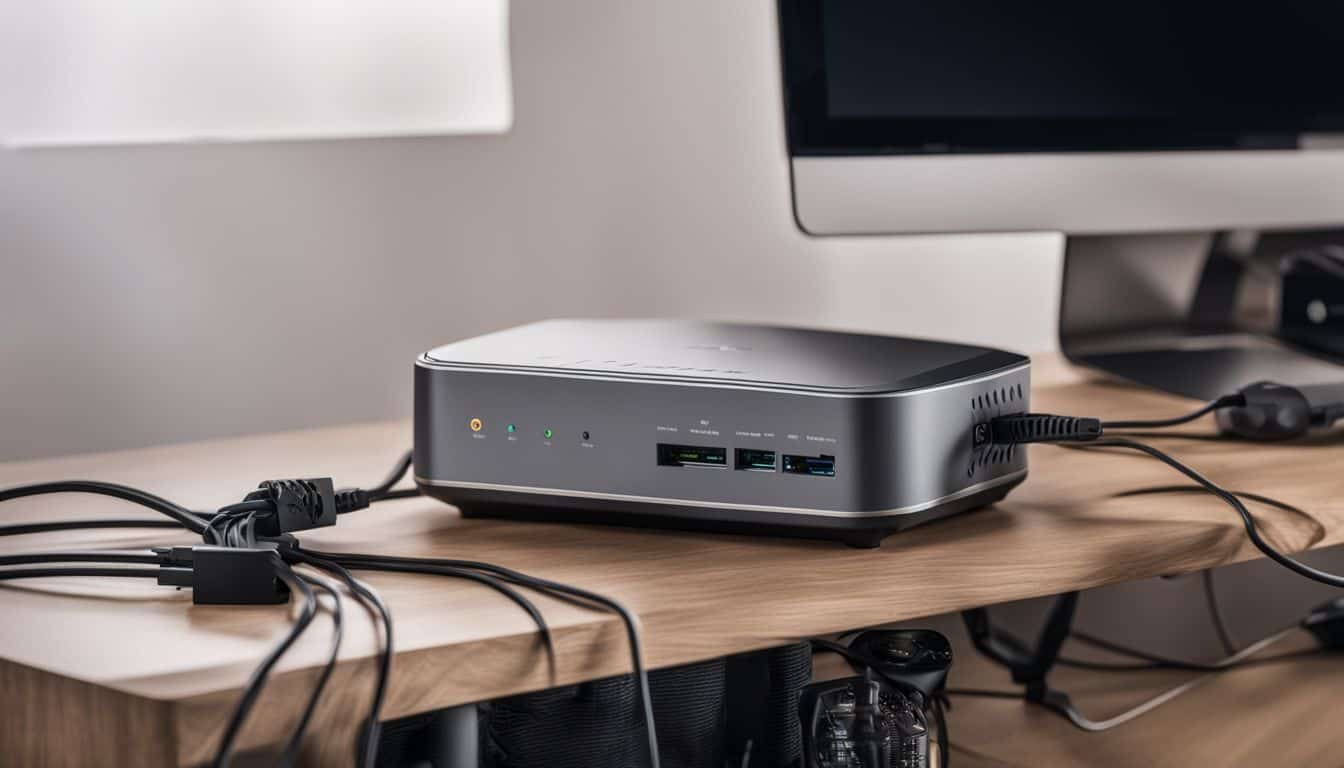
To self-install your broadband connection, follow these steps for a quick and hassle-free setup.
Steps to self-installation
Installing your broadband connection can be a simple task if you follow the right steps.
- Start by unpacking the self – installation kit provided by your broadband provider.
- Locate the coax outlet in your home – this is where you will connect your modem.
- Take the modem and plug it into the coax outlet, ensuring a secure connection.
- Power up the modem, keeping an eye on indicator lights to confirm everything’s working correctly.
- While your modem powers up, take the router included in your installation kit.
- Connect this router to the modem using an Ethernet cable, again checking any indicator lights for signs that both devices are communicating effectively with each other.
- Finally, test your connection to make sure everything’s in order.
Providers that allow self-installation
Several broadband providers allow users to indulge in the DIY installation process. Top amongst these are BT, Virgin Media, Sky, and Vodafone, each offering self-installation kits with all necessary equipment. Companies such as Spectrum, CenturyLink, AT&T and Cox Communications join this bandwagon across the seas. Their user-installed broadband options equip customers with self-service broadband setup materials. The independent setup provides a cost-effective alternative to professional installations, resulting in minimal or entirely free charges for the customers. It’s noteworthy that regardless of service providers or connection types, the self-connection process presents similar steps to follow. During this customer-installed internet process, it’s typical for users to have queries about possible disruptions or time frames for successful installation.
Advantages and disadvantages of self-installation
Self-installing your broadband connection comes with a number of pros and cons that one should be aware of when deciding on the best route to take.
| Advantages | Disadvantages |
|---|---|
| Self-installation is generally free, which saves costs. | For people who are not tech-savvy, self-installation could be a complex task. |
| Self-installation is often the quickest way to get connected without having to schedule a visit from an engineer. | Incorrect setup could lead to slower speeds or intermittent connectivity issues. |
| Self-installation could be an option for those with pre-existing wiring in their homes, lessening the need for professional installation. | Potential damage to property can occur if installations are done improperly. |
| With providers like BT Broadband, self-installation can be a straightforward process. | Delays can occur with self-installation, especially if you run into issues that require technical support. |
Issues to Consider during Broadband Installation
During broadband installation, it is important to consider factors such as obtaining permission from your landlord, the potential for property damage during installation, and whether pre-wiring is necessary in your home.
Permission from landlord
Securing permission from the landlord can be a crucial step in installing broadband in your rental property. The terms of the tenancy agreement may require that you obtain approval for major changes such as internet installation.
Some landlords appreciate being involved especially when their properties are managed by Openreach, which often requires landlord consent for installations. However, not all broadband provider and setup scenarios necessitate this approach.
There are instances where tenants have successfully added extra broadband lines without explicit consent, primarily due to tenant regulation loopholes or ambiguous rental agreement clauses.
Understanding these guidelines helps streamline your quest for seamless internet access while respecting rental property rules.
Potential damage to property
Installing a broadband connection at home can, on rare occasions, lead to potential damage to the property. This is especially true if digging or drilling is involved as part of the setup process, which can disrupt your living spaces and pose risks to furnishings or structure.
Despite being somewhat intrusive, such instances are generally few and far between.
To prevent any inadvertent harm, it’s crucial for homeowners and tenants alike to understand what the installation procedure entails. For instance, wall box installations might need drilling into walls which could affect both aesthetics and structural integrity.
Renters should also seek landlord permissions for broadband or cable installations as some alterations may not be permissible in rental properties. In brief, meticulous planning helps minimise disruption to property during broadband network installation.
Pre-wiring in the home
Pre-wiring your home for a broadband connection involves installing network and data cabling throughout the property, laying the groundwork for fibre-optic broadband installation. The task might seem daunting because it can be costly depending on the size of your house.
However, having a pre-installation checklist could significantly ease this process by guiding you through necessary steps tailored to suit individual needs and budget. It’s essential to know that different methods exist based on specific circumstances, so understanding these options becomes crucial in making an informed decision about wired internet installation at home.
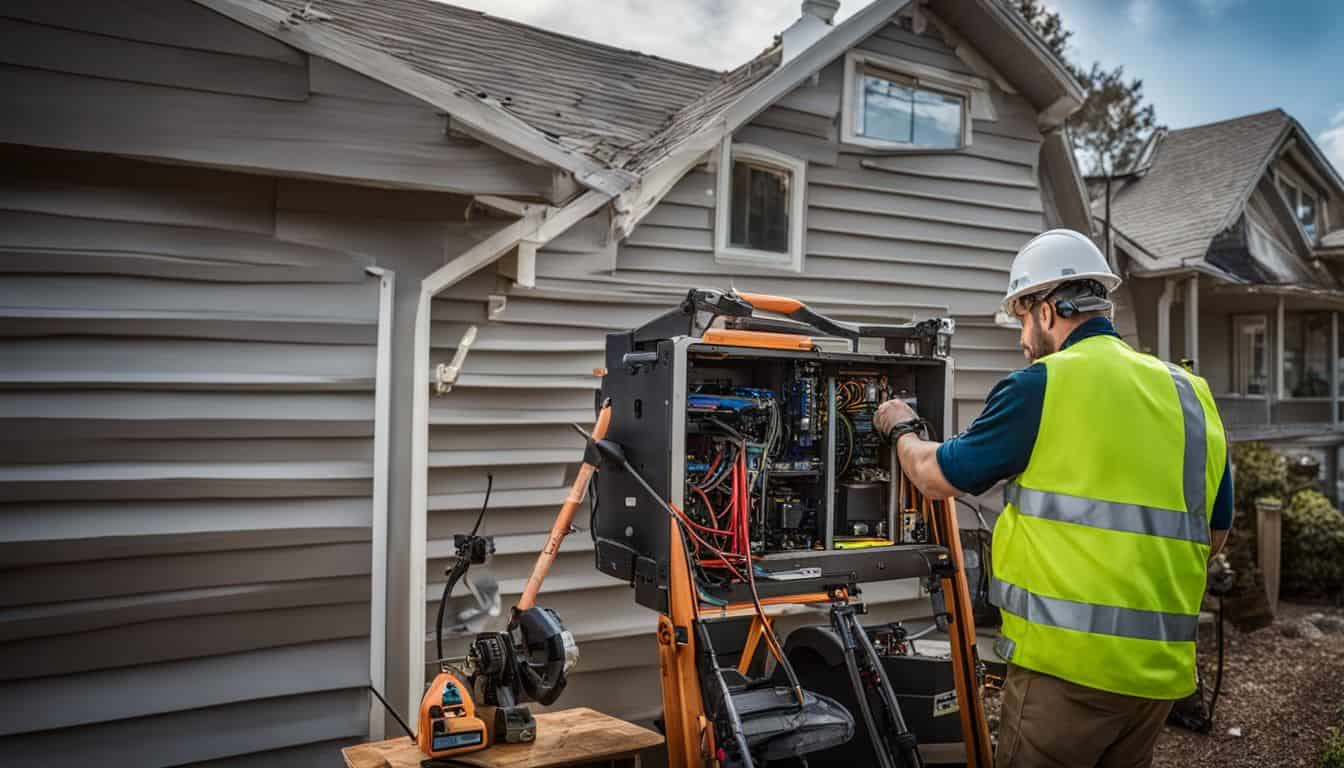
Broadband Providers That Offer Self-Installation Options
Virgin Media, Vodafone, and Now Broadband are some of the leading broadband providers that offer self-installation options. Find out more about these providers and how you can set up your broadband connection easily without the need for an engineer.
Virgin Media
Virgin Media stands out as one of the most favourable broadband providers offering self-installation options. Their QuickStart package eases the process of setting up your internet connection, saving you both time and effort.
With Virgin Media’s affordable Essential Broadband packages that start from just £12.50 per month, budget-friendly internet installation has never been more accessible. Furthermore, their fibre broadband deals serve high-speed internet with an average download speed reaching up to 1130Mbps.
The best part? Enjoy these top-tier services at zero setup cost! Whether you prioritise fast and reliable connections or a quick and easy setup process, Virgin Media offers versatile plans tailored to meet your needs effectively.
Vodafone
Vodafone is a reliable broadband provider that offers self-installation options for customers. With their broadband installation services, you can set up your internet connection without the need for an engineer visit.
Vodafone is well-known as the UK’s largest full fibre provider, offering high-speed broadband with speeds of up to 910Mbps. They also provide a broadband app that allows you to manage and control your WiFi network, including setting up internet-free family time and blocking unwanted devices from accessing your WiFi.
Additionally, Vodafone offers affordable broadband plans, such as their “Broadband Essentials” plan designed specifically for those on Universal Credit or benefits. This plan provides speeds of up to 38Mbps and is priced at just £12 per month.
Another great feature of Vodafone’s broadband service is the introduction of the Vodafone WiFi Hub and Broadband app. These enhancements further enhance your broadband experience by providing advanced WiFi management tools and features like parental controls.
Whether you’re looking for fast internet speeds or affordable plans, Vodafone has something to offer to enhance your online experience.
Now Broadband
Now Broadband is one of the broadband providers that offer self-installation options. As part of their service, they provide unlimited, no-contract broadband and calls. They offer two mid-level fibre broadband speeds of 36Mbps or 63Mbps.
Whether you’re an existing NOW Membership customer or a new customer, you can easily add NOW Broadband to your plan. If you need assistance with installing their service at a new site, NOW Broadband provides all the necessary information to help you get set up smoothly.
Common FAQs Related to Broadband Installation
What are the fastest broadband installation providers? Can I send my router to a different address for installation? Do I need an engineer’s assistance for setup? These are some common questions people have about broadband installation.
Fastest broadband installation providers
Sky, BT, and Virgin are recognized as some of the fastest broadband installation providers in the UK. These companies offer speedy broadband setup options with installation times as quick as within two weeks.
For those who want their internet up and running without any delay, it is worth considering these providers for their efficient broadband installation services. Whether you need a rapid broadband connection or an expedited broadband hookup, these companies can provide swift broadband installation to get you connected in no time.
Sending router to a different address
To ensure a smooth broadband setup, you may need to send your router to a different address. This is particularly common when moving house or transferring your broadband connection.
Whether you’re changing providers or simply relocating within the same area, it’s important to consider how to move your router and distribute internet and WiFi throughout your new home.
By following the proper steps and understanding the installation process, you can easily set up internet in a new house without any hassle.
Need for engineer assistance
Sometimes, installing broadband on your own can be a bit challenging. That’s when you may need the help of an engineer. While many providers offer self-installation options, there are situations where having an engineer visit becomes necessary.
For example, BT and NOW Broadband installation may require an engineer to ensure everything is set up correctly. If you’re unsure about the installation process or facing technical issues, contacting your internet service provider’s customer support will help in arranging for an engineer to assist you.
Tips for Successful Broadband Setup
Choose the right broadband provider, understand the equipment and setup process, and troubleshoot common issues to ensure a successful broadband setup.
Choosing the right broadband provider
To choose the right broadband provider, consider these factors:
- Price: Compare the costs of different providers and their packages to find one that fits your budget.
- Speed: Check the download and upload speeds offered by each provider. Higher speeds are better for streaming and gaming.
- Contract length: Look at the length of the contract and any early termination fees. Shorter contracts offer more flexibility.
- Customer reviews: Read reviews from other customers to get an idea of the provider’s reliability and customer service.
- Service reliability: Research the provider’s track record for service outages and interruptions.
- Data caps: Check if there are any data limits or additional charges for exceeding a certain amount of data usage.
- Bandwidth: Consider how many devices will be connected to your broadband network.and ensure you have enough bandwidth to support them all.
- Installation process: Find out if self-installation is an option or if a technician needs to come to your home.
- Customer support: Look into the availability and quality of customer support provided by each broadband provider.
- Speed test: Use online speed testing tools to check the actual speeds offered by different providers in your area before making a decision.
Understanding the equipment and setup process
Setting up your broadband connection involves understanding the equipment and setup process. First, you’ll need to set up an ADSL modem and configure your router. This will allow you to establish a WiFi network for convenient internet access at home or in your small business.
Make sure to follow the comprehensive broadband installation guide available to assist you throughout the process. Remember that while the average installation time is around two weeks, there may be potential delays.
But once everything is set up, you’ll be ready to connect to the internet with fast and reliable broadband!
Troubleshooting common issues
Troubleshooting common issues is an important part of setting up your broadband connection. Here are some tips to help you address any problems:
- Check your internet speeds: Use online speed tests to determine if you’re getting the speeds you’re paying for.
- Improve Wi-Fi signal strength: Move your router to a central location in your home and away from obstacles like walls or furniture.
- Fix IP address problems: Restart your router and modem to reset the IP addresses, or contact your provider for assistance.
- Test with Ethernet connection: Connect your computer directly to the router with an Ethernet cable to see if Wi-Fi is causing the issue.
- Check physical network connectivity: Make sure all cables are securely plugged in and there are no loose connections.
- Troubleshoot modem and router issues: Restart both devices, reset them to factory settings if necessary, or contact your provider for support.
- Consider factors affecting broadband speed: Any recent changes in your home, such as new appliances or construction, could impact your connection.
Conclusion
Installing and setting up broadband is a necessary step for every household to enjoy reliable internet access. Whether you choose self-installation or opt for an engineer visit, it’s important to consider factors like permission from your landlord and potential property damage.
By following the right steps and understanding the equipment and setup process, you can have a successful broadband installation that meets your needs. Don’t forget to troubleshoot any common issues that may arise during setup!
FAQs
1. How long does it take to install broadband?
The time it takes to install broadband can vary depending on the provider and your location, but typically it can be completed within 2 weeks.
2. What equipment do I need for broadband installation and setup?
For broadband installation and setup, you will need a modem or router provided by your service provider, Ethernet cables for wired connections, and Wi-Fi enabled devices for wireless connectivity.
3. Can I set up my own broadband connection?
Yes, many providers offer self-installation kits with step-by-step instructions that allow customers to set up their own broadband connection without the need for an engineer visit.
4. Will there be any disruption in my current internet service during the installation?
There may be a temporary disruption in your current internet service during the transition to the new broadband connection, but this should be minimal and only last for a short period of time.
5. How do I troubleshoot common issues during broadband setup?
If you encounter any issues during broadband setup such as a slow or unstable connection, restarting your modem/router, checking cable connections, and contacting customer support are some initial troubleshooting steps you can take.
